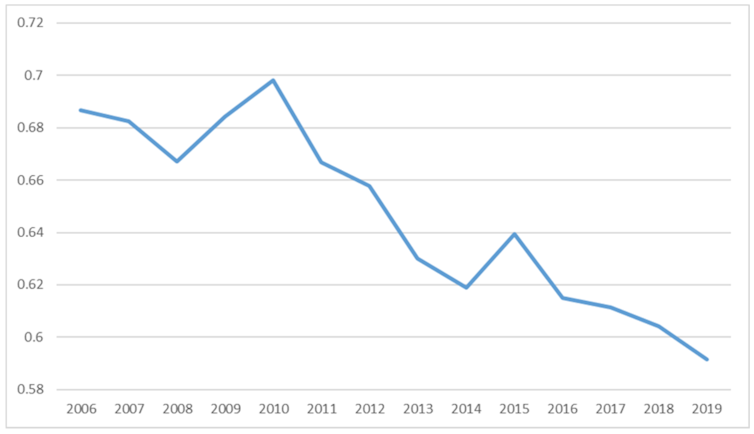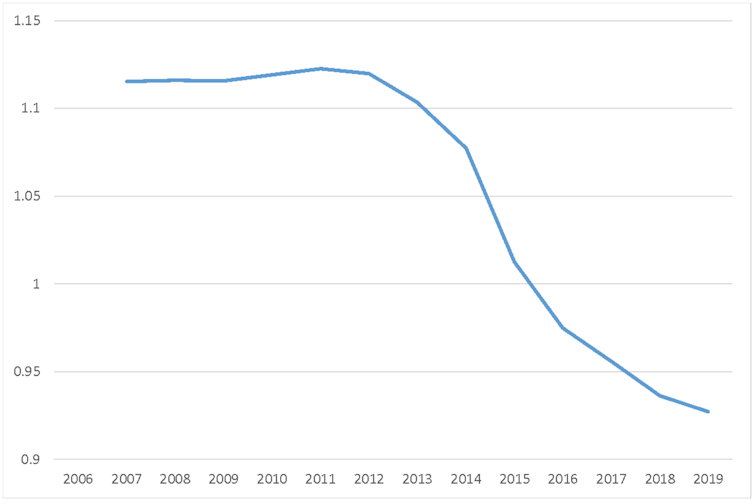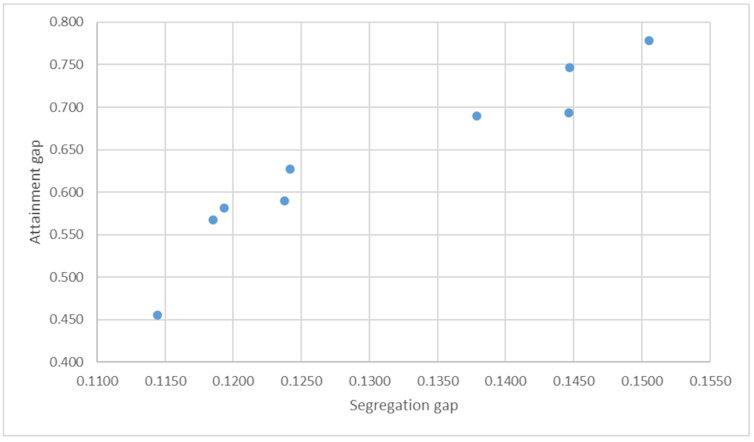
Children living in relative poverty in England have worse average educational outcomes, including lower grades in exams, than other pupils. This situation is often referred to as the poverty attainment gap.
Closing this gap, so that poorer students do as well at school as their peers, is a concern for countries around the world. The ways this can be done has been a focus of my research.
A key issue to address is the social divisions that mean that certain schools cater for richer or poorer pupils. Extra funding should also be focused on the children who need it most.
Measuring the gap
In official statistics, the attainment gap is measured as the difference between the attainment of the majority of pupils and those eligible for free school meals (a measure of poverty). This is problematic because the gap changes as the proportion of pupils eligible for free school meals changes over time.
Individual students’ circumstances might change as their family income changes. But, more importantly, different groups of students may have more or fewer pupils eligible for free school meals due to fluctuations in the economy or changes in government policy. This then affects the attainment gap, but is nothing to do with education or the work of schools.
A more robust measure is to measure the difference in attainment between pupils always eligible for free school meals for their entire school lives, and the rest. These two groups are stable over time and less affected by economic and legal changes. And the attainment gap between them had been reducing historically in England until 2014.
The gap increased in 2015 – perhaps due to changes to the curriculum – but since 2016 the gap has started decreasing again at key stage two (ages seven to 11). It is difficult to compare the attainment gap after 2019 with what came before, because of the exam disruption caused by COVID-19 lockdowns.
The attainment gap at the end of year two over time

Despite this progress, the gap between the permanently disadvantaged students and the rest is still substantial – note that the graph above does not start at zero.
Perhaps the main driver of the change has been a slow reduction in social segregation – the extent to which poorer children are clustered in schools with others like them.
Decline in social segregation of pupils in year one

In my research, I’ve compared the attainment gap with the level of poverty segregation in schools in areas across England. I’ve found that where segregation is lower, the attainment gap is too.
Reinforcing the ongoing reduction in segregation, and in the attainment gap in turn, should be an educational priority.
Scatterplot showing the relationship between segregation (y axis) and attainment gap (x axis) at key stage two

Types of school
One way to reduce this social segregation – and so reduce the attainment gap – is to reduce the variety of different types of schools.
There is an unnecessarily wide variety of different types of school in England. Grammar schools select pupils by ability – which is linked to social background. Faith schools select by religion, which is linked to ethnicity. There are also special, free, foundation, specialist, and community schools, plus academies and university technical colleges. Each type can end up with somewhat different pupil intakes, so driving segregation.
All these schools could be gradually phased into a national system of similar all-ability local schools. Pupils would still be able to receive additional help or tailored interventions within such schools, but the social mix of the schools would better represent their region than at present.
School catchment areas are another factor increasing social segregation. Where schools are oversubscribed, contested places should not be allocated on the basis of travel or distance from home, or of feeder primary schools. These methods all duplicate and reinforce residential segregation by poverty.
Alternative measures could include banding by poverty, where each school might be required to give a certain number of places to pupils eligible for free school meals, or lotteries, where oversubscribed places are allocated randomly. Pupils could be given free transport to schools outside their immediate neighbourhood.
The idea would be to spread out the most disadvantaged students between schools, in order to make any issues with their attainment easier to address.
Managing funding
The biggest decline in poverty segregation has taken place since 2011, when pupil premium funding was introduced. Pupil premium allocates extra funding to schools in proportion to the number of disadvantaged pupils that they take. This reduces the disincentive for schools to take poorer children.
But the pupil group with the lowest attainment are those who have been eligible for free school meals for the longest. So it makes sense for pupil premium funding to be better calibrated in future. Proportionately more funding should follow the most disadvantaged pupils – those who are eligible for free school meals for all of their time at school.
Stephen Gorard does not work for, consult, own shares in or receive funding from any company or organisation that would benefit from this article, and has disclosed no relevant affiliations beyond their academic appointment.
This article was originally published on The Conversation. Read the original article.







